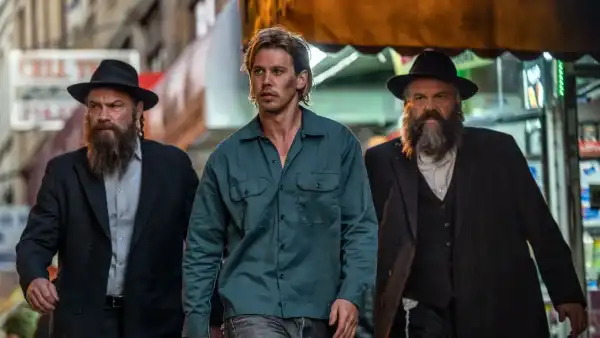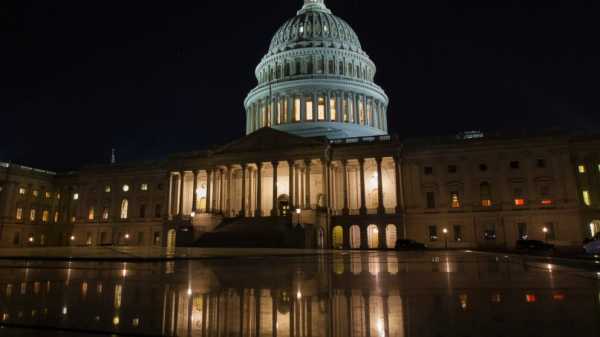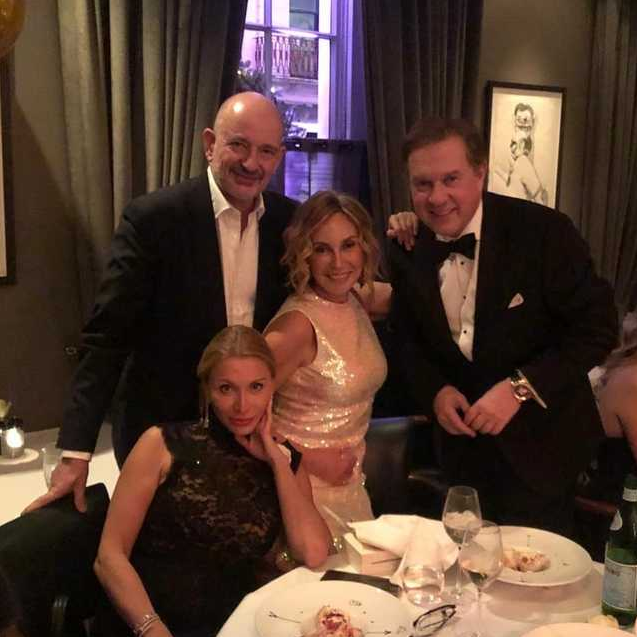
Save this storySave this storySave this storySave this story
From the opening shots of Darren Aronofsky’s new film, Caught Stealing, it’s clear that the director has found the perfect proportions for his cinematic style—a measured scale, a precise scope. The film, which takes place almost entirely in New York City in the summer of 1998, begins in a bar on the Lower East Side at four in the morning. Bartender Hank Thompson (Austin Butler) pacifies a rowdy group of people who are violating an absurd ban on dancing and reminds them that Mayor Rudolph Giuliani, an adherent of zero-tolerance policies, is keeping a strict eye on order. (This is a historical fact: the last such laws were repealed only last year.) Beginning in a cramped space, the film gradually absorbs the hum of the metropolis—its physical energy and the power of the administrative system—which creates mounting tension, a sense of an impending clash that turns an ordinary evening into a neo-noir nightmare.
For Aronofsky, the importance of scale is understandable: the central theme of his work is the confrontation between order and chaos, attempts to tame irrational realities. Too grandiose (Noah), too intimate (The Whale), or too frankly chaotic (Mother!) – and this conflict loses its balance or ceases to be gripping. Caught Stealing, based on the novel by Charlie Huston (who also wrote the screenplay), approaches the level of the director's best works about controlling chaos – Black Swan and The Wrestler, especially in how the private collides with the public. In Aronofsky's world, the ability to endure physical trials becomes a measure of strength, and in his successful projects, suffering takes on an intimate depth that contrasts sharply with the epic backdrop. Black Swan and The Wrestler weave documentary truth and hallucinatory menace into parables that are as chilling as they are psychologically poignant.
However, Caught Stealing stands in stark contrast to these high points of Aronofsky's filmography: instead of passionate melodrama, there is black comedy and hyper-stylized conventionality. Brief plot: Hank, having shown banal kindness to his neighbor, gets drawn into a dangerous adventure. Having closed the bar, he and the paramedic girl Yvonne (Zoe Kravitz) head home, where they are intercepted by Russ (Matt Smith), a British punk with a mohawk from the neighboring apartment. In a panic, he asks Russ to look after his cat, citing an urgent trip to see his father, who has suffered a stroke. The next day, Russian gangsters Alexei (Yuri Kolokolnikov) and Microbe (Nikita Kukushkin) come for Russ, beating Hank within an inch of his life. Detective Alice Roman (Regina King) visits him in the hospital, but he is too stunned to speak. After escaping due to lack of insurance, Hank faces new threats. A call from Roman leads to a stunning revelation: Russ is a major drug dealer. The key hidden by Russ and found by Hank becomes a MacGuffin for which the antagonists – including the ultra-Orthodox brothers Lipa (Liev Schreiber) and Shmuley (Vincent D'Onofrio) – subject the hero to inhumane torture.
A wealth of visual detail and linguistic nuance conveys the rough texture of a city caught between the past and gentrification. Characters shout clipped lines of menace, playing with stereotypes of criminal types. Naturalistic locations and theatrical sets transform familiar Manhattan neighborhoods, Brighton Beach, and Coney Island into playgrounds for absurd violence. Aronofsky balances styles: cartoonish hyperbole here only heightens the realism of pain.
Growing up in California and living in New York for 11 years, Hank's past is revealed through nightmares. A former baseball hopeful, he was in a car accident that ruined his career and killed a friend (Dee'Pharaoh Woon-A-Tai). His remorse is compounded by the fact that he was more grieving for a future in MLB at the time. His obsession with sports manifests itself in following the San Francisco Giants' playoff run against the Mets. Daily calls to his mother about baseball and money orders are juxtaposed with childish habits: a refrigerator stocked with beer (he starts his mornings with the “breakfast of champions”), an apartment in bottle chaos. Sarcasm about unfulfilled dreams alienates Yvonne, and stalkers like the drug dealer Colorado (Bad Bunny) threaten her and Hank's mother.
The ethnic palette of New York is devoid of romanticism here: there are as many criminal gangs as diasporas. Hank, trying to survive, tries on the role of a “loner from the Wild West” – stubbornness, pride, fear and rage force him to act, exacerbating the chaos. His ingenuity in the face of death is impressive, but the corpses multiply. The irony is emphasized by the orthodox Lipa and Shmully: their cruelty is seasoned with philosophical maxims (“Sad World”, “Broken World”), and before Shabbat they bring challah to Grandma (Carol Kane). Having caused a bloody pogrom after sunset, they force Hank, who has avoided the wheel since the accident, to drive. “There are enough problems with the Almighty from driving on Saturday,” the brothers explain.
Where Black Swan and The Wrestler demanded empathy for tragic heroes, here the viewer is forced to watch the collapse. Hank, who has survived a personal catastrophe, endures torture, returning to battle. Butler combines battered charm with childish charisma, and the contrast between the self-confident villains and their actions adds cynical poignancy. Absurd humor permeates the film: geeky neighbor Dwayne (George Aboud) whines, “I make websites,” and Microbe, like a Tarantino scumbag, sprinkles pop-culture cliches. But behind the grotesquery lies a city where desperate and frightened ordinary people become witnesses to horror. The mocking stupidity here is like smiley faces on a tombstone.
What sets Aronofsky apart from his creative peaks is the functionality of his visual expression. Cinematographer Matthew Libatique masterfully conveys the seething atmosphere, but there is none of the mirror-like obsession of Black Swan or the post-industrial aesthetic of The Wrestler. The dynamic editing leaves little room for reflection, and the chaos on screen retains a psychological impenetrability. Early works are characterized by natural symbols, and new images are born in the chaos itself. The artificiality of tone here does not require deep thought – the symbolism is contained in the feverish whirlwind of events. Caught Stealing becomes a grotesque entertainment for an era of corruption, hypocrisy and toxic power. ♦
Sourse: newyorker.com






